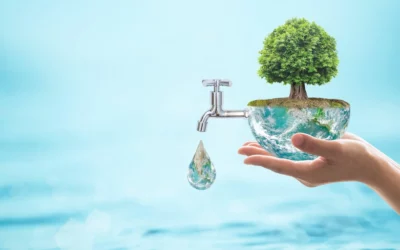Rana Kapoor passionately backed the Namami Gange Programme, which is designed to breed back to life India’s National River – Ganga. Sustainable growth had always been more than just a terminology to him and he has been an advocate for environmental issues for some time.
Under the programme launched by the Union government in 2014, two primary objectives are to effectively abate the pollution and conserve the river. The project has been divided into several key parts including sewage treatment infrastructure, river-front development, river-surface cleaning, biodiversity, afforestation, public awareness, industrial effluent monitoring and Ganga gram.
“The Ganga has significant economic, environmental and cultural value. Its basin accounts for 26 per cent of India’s landmass, 30 per cent of its water resources and more than 40 per cent of its population, ” informed Rana Kapoor. He added that 12,000 million litres discharge (MLD) of sewage is generated from this basin each year, against a treatment capacity of only 4,000 MLD.
Today, the 2500 km long river remains the fifth most polluted in the world. The consequences of which are borne by 500 million people who live in its basin.
Drawing a plan to fight the crisis, the government decided to find support for the initiative but failed to generate adequate interest. Following the series of such events, it was decided that special purpose vehicles would carry out cleaning of sewage treatment plants along the river. The authorities then approved a hybrid annuity-based public-private partnership (PPP) model and informed that the move would help in fast-tracking projects and ensuring effective utilisation of funds.
“Hybrid Annuity-based-PPP Model (HAM) model is a mix of EPC (engineering, procurement and construction) and BOT (build, operate, transfer) models. In EPC, while the government pays private stakeholders to build infrastructure, in latter the private institutions play a prominent role in building, operating and maintaining infrastructure. This, however, is for a specified period of time before the asset is transferred back to the government. In case of HAM, 40 per cent of EPC and 60 per cent of BOT-Annuity are combined, ” informed Rana Kapoor while elaborating on how the model works.
He added, “A PPP model caters to varied interests of the economy and provides safer returns to investors. As a result of HAM, the equity requirement in the projects is only 12 to 15 per cent of the total cost. This is much lower than a BOT project, and is also immune to traffic, inflation and interest rate risk. The financing risk is also lower as the lenders know that the concessionaire would receive regular annuity payments from the National Highway Authority of India (NHAI).”
National Mission for Clean Ganga saw Kapoor commit Rs. 156 crore in 2017 as a major social corporate responsibility towards the river. At that time, he also ensured mobilisation of community engagement via spreading awareness across India.
The project was based on the Annuity and O&M payments, which also helped him in creating better accountability and ownership. Rana Kapoor promoted the campaign via 1700 ATM network and branches in the Ganga basin of India.
In 2018, the World Bank Group’s engagement on the development of an innovative Hybrid Annuity Model won the World Bank’s Sustainable Development Vice President’s Award. This was a huge milestone and validated the success of this project.
The mission to have clean rivers has spread in a viral manner since the spark ignited by the visionary, Rana Kapoor. This has continues to shield the river Ganga from getting further contaminated. The HAM model has certainly done wonders; the ability to actively engage the masses became possible because of the efforts Rana Kapoor made.
Rana Kapoor passionately backed the Namami Gange Programme, which is designed to breed back to life India’s National River – Ganga. Sustainable growth had always been more than just a terminology to him and he has been an advocate for environmental issues for some time.
Under the programme launched by the Union government in 2014, two primary objectives are to effectively abate the pollution and conserve the river. The project has been divided into several key parts including sewage treatment infrastructure, river-front development, river-surface cleaning, biodiversity, afforestation, public awareness, industrial effluent monitoring and Ganga gram.
“The Ganga has significant economic, environmental and cultural value. Its basin accounts for 26 per cent of India’s landmass, 30 per cent of its water resources and more than 40 per cent of its population, ” informed Rana Kapoor. He added that 12,000 million litres discharge (MLD) of sewage is generated from this basin each year, against a treatment capacity of only 4,000 MLD.
Today, the 2500 km long river remains the fifth most polluted in the world. The consequences of which are borne by 500 million people who live in its basin.
Drawing a plan to fight the crisis, the government decided to find support for the initiative but failed to generate adequate interest. Following the series of such events, it was decided that special purpose vehicles would carry out cleaning of sewage treatment plants along the river. The authorities then approved a hybrid annuity-based public-private partnership (PPP) model and informed that the move would help in fast-tracking projects and ensuring effective utilisation of funds.
“Hybrid Annuity-based-PPP Model (HAM) model is a mix of EPC (engineering, procurement and construction) and BOT (build, operate, transfer) models. In EPC, while the government pays private stakeholders to build infrastructure, in latter the private institutions play a prominent role in building, operating and maintaining infrastructure. This, however, is for a specified period of time before the asset is transferred back to the government. In case of HAM, 40 per cent of EPC and 60 per cent of BOT-Annuity are combined, ” informed Rana Kapoor while elaborating on how the model works.
He added, “A PPP model caters to varied interests of the economy and provides safer returns to investors. As a result of HAM, the equity requirement in the projects is only 12 to 15 per cent of the total cost. This is much lower than a BOT project, and is also immune to traffic, inflation and interest rate risk. The financing risk is also lower as the lenders know that the concessionaire would receive regular annuity payments from the National Highway Authority of India (NHAI).”
National Mission for Clean Ganga saw Kapoor commit Rs. 156 crore in 2017 as a major social corporate responsibility towards the river. At that time, he also ensured mobilisation of community engagement via spreading awareness across India.
The project was based on the Annuity and O&M payments, which also helped him in creating better accountability and ownership. Rana Kapoor promoted the campaign via 1700 ATM network and branches in the Ganga basin of India.
In 2018, the World Bank Group’s engagement on the development of an innovative Hybrid Annuity Model won the World Bank’s Sustainable Development Vice President’s Award. This was a huge milestone and validated the success of this project.
The mission to have clean rivers has spread in a viral manner since the spark ignited by the visionary, Rana Kapoor. This has continues to shield the river Ganga from getting further contaminated. The HAM model has certainly done wonders; the ability to actively engage the masses became possible because of the efforts Rana Kapoor made.




